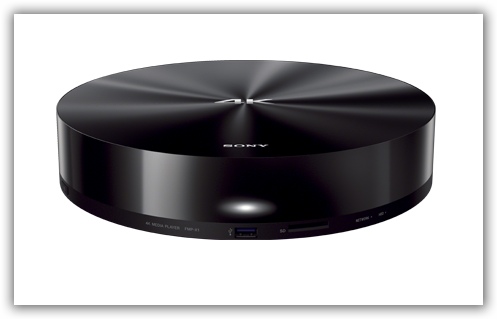aNewDomain.net — You’ve probably noticed this latest round in the television industry’s pixel wars. Here’s our Alfred Poor’s deep dive on 2K versus the newest 4K panel displays. Alfred tells us how the 4Ks work and whether to use them as TVs or as part of a multiple-monitor setup for your computers.
Just as the price of 1080p flat screen sets — aka Full HD sets — have become affordable, manufacturers come in to escalate matters. Meet the 4K panel — or the ultra-high definition set, as the Consumer Electronics Association (CEA) calls it.
The name 4K comes from an approximation of the horizontal resolution. You’ve seen this kind of approximation before. For example, we refer to 1K as meaning 1000 bytes when what it really means is 1,024 bytes, and so on.
Full HD 1080p sets have 1,920 horizontal pixels and 1,080 vertical. That’s where the 1080 comes from: It’s the number of lines that make up the image vertically. The horizontal resolution is close enough to 2,000 that they call it 2K. (Of course, this is like gearing up for the Y2K crisis during the Roaring Twenties. But who’s counting?)
The new 4K sets typically have resolutions of 3,840 pixels by 2,160 pixels. That’s the equivalent of taking four 1080p panels and gluing them together.
As there’s no official standard for this yet, watch out for the occasional off-brand panel with a funky configuration. Never mind that there’s only limited content available. There’s also no physical delivery system for the content like, for instance, a higher-res Blu-ray disc. And there are few devices, outside of Sony’s 4K Media Server player, that even deliver content inside this resolution.
Nevertheless, manufacturers are bringing them to market and competition is causing the prices to plummet — already.
The 4K Computer Display
This development prompted a colleague to write to me recently. He asked whether and how he could use a new 4K TV as a computer display and what factors he should consider.
Great question.
In the early days of LCD panels, the higher-res models appeared in computer monitors before televisions because the high price could be justified for business applications. Now that sequence has been more or less reversed. There are a few 4K panels in IT applications, but they are primarily used in vertical niches such as medical imagery.
The big question here is not pixel count, but pixel size.
A 50-inch 4K display has no more pixels per inch than a 25-inch 1080p display. On a pixel-per-inch basis, it is far cheaper to buy four 25-inch 1080p displays than one 4K display. The cheapest models offered by one online retailer that I checked are $160 for a 24-inch 1080p monitor, versus the 50-inch Seiki 4K TV at $1,050.
The name brand 4K sets from Sony, Samsung, and LG sell for four to five times that much.
Four of the smaller monitors cost $640, which is $410 less than the bargain brand 4K television. And getting graphic cards to drive the four monitors will be a lot easier and cheaper than finding one for the 4K set. (AMD and NVIDIA do offer graphics adapters that support 4K, but they cost $500 to $1,000.) You could buy a four-monitor stand for $300 and have money left over.
So, if you don’t care about the cost of the display, and if are willing to pay $500 to $1,000 for a graphics adapter to drive it, there does not seem to be any reason that you can’t use a 4K TV as your computer monitor. But if you’re looking for the best way to get lots of pixels and screen real estate for less money, multiple monitors are the way to go.
Check out the images below of the almost-affordable Seiki 4K display, the Sony 4K player and the four-display Ergotron four-monitor stand.
Here’s an image from Seiki’s 40-inch 4K TV. It’s priced far below other brands’ 4K displays — at just over $1,000 U.S.

Image credit: Seiki Digital
Sony’s 4K Ultra HD Media Player comes with 10 4K movies installed, with the prospect of being able to download more movies from Sony soon.

Image credit: Sony Corp.
And finally, speaking of multiple monitors, check out this four-monitor stand from Ergotron. It’s a better bargain than using a single 4K TV as a computer monitor.

Image credit: Ergotron
For aNewDomain.net, I’m Alfred Poor.
Based in bucolic Bucks County PA, Alfred Poor is a senior technologist here at aNewDomain.net. A 30 year tech journalism vet, he’s internationally renowned for his coverage of displays. He is easily distracted by shiny, sparkly gadgets and is covering consumer tech for us, too. Contact Alfred atAlfred@aNewDomain.net, follow him @AlfredPoor and find the +Alfred Poor Google+ stream here. Alfred also is a professional speaker, a bluegrass musician and a sailor. Check out his LinkedIn profile for more.













[…] On 4K Panel TVs: Great TVs, Rotten Monitors, Alfred Poor Deep Dive […]
1. 4x HD monitors mean you have big, ugly, borders in the middle of your picture, meaning that you can never use all of your pixels to watch 4K content.
2. Separate monitors mean that you can never use all of your window space for a single window, for example, to manipulate a single large spreadsheet or to really explore a large UI app like Adobe Premiere or After Effects.
3. Separate monitors mean you likely need more graphics cards.
[…] and landing video here. Soon after this exhilarating aerial experience, I happened to run across a 4K TV article on aNewDomain by Alfred Poor. Quickly my thoughts ran to what a small world it is, and how nice a […]
[…] For Alfred Poor’s piece on 4K TVs on why they make for better TVs but worse monitors, click he… […]
“So, if you don’t care about the cost of the display, and if are willing to pay $500 to $1,000 for a graphics adapter to drive it, there does not seem to be any reason that you can’t use a 4K TV as your computer monitor.”
How do you get from that, to “Rotten Monitors”? I read this article thinking that you might explain some reason not to use a 4K display with a computer. But the only reason you gave is the price. That hardly makes them “rotten” or inferior.
I avoid news sites which use misleading headings, it really annoys me.
Your article was fine, apart from the heading.